Looking for a cruise accessory that delivers huge value for your money and suitcase space? Trust me, pack a cruise-friendly travel power strip, USB charging block, or outlet extender. This simple tip is one of my all-time cruise favorites and an essential item on every packing list. But here’s the catch: whatever you pack must not have surge protection.
Surge protectors are strictly banned onboard cruise ships because their unique electrical systems make these devices a serious fire hazard (fires at sea are especially dangerous). Always carefully check your luggage for prohibited items before boarding. I learned this lesson the hard way when Royal Caribbean updated its policy, allowing only USB charging blocks. Security promptly confiscated my trusted power strip, even though it was buried inside a laptop case within my duffel bag.
Keep reading to learn exactly why cruise lines forbid surge protectors, what these policies mean for your packing plans, and which safe, cruise-approved power options you should bring instead.
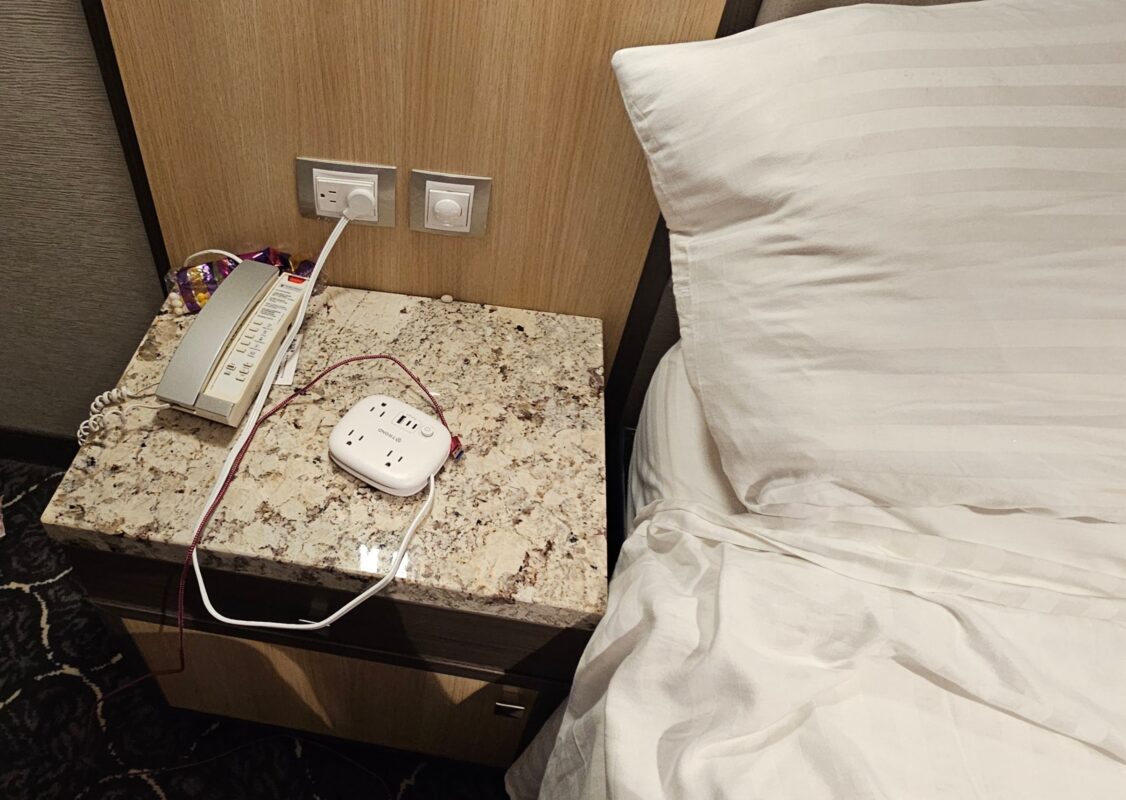
Quick Answer & 2025 Policy Snapshot
Cruise ships ban surge protectors because their electrical outlets differ significantly from those at home, using two live wires instead of just one. Traditional surge protectors can interrupt only one wire, leading to overheating and a higher risk of onboard fires, something explicitly documented by the U.S. Coast Guard after shipboard incidents.
Important Update for 2025: Royal Caribbean now prohibits all power strips and extension devices, even those without surge protection. Guests sailing with Royal Caribbean must exclusively use USB-only charging blocks or the built-in cabin outlets and USB ports. For now, the other major cruise lines continue to allow non-surge power strips.
Always verify your cruise line’s specific policies before packing to ensure compliance and avoid confiscation at embarkation.
This post contains affiliate links that could result in a commission to this website (at no additional cost to you). Visit our Disclosures Page for more information.
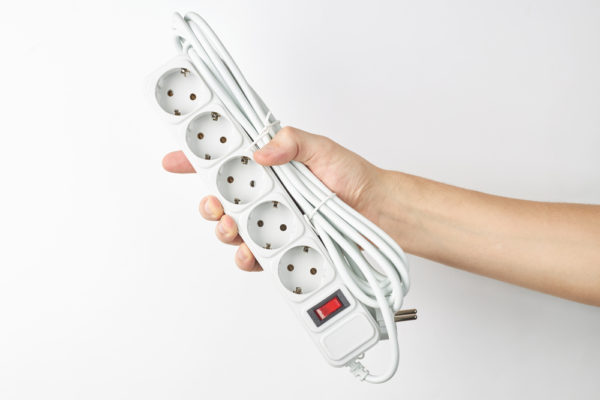
Why Surge Protectors Pose a Fire Risk at Sea
Wondering why cruise ships specifically target surge protectors in their policies? It comes down to fundamental differences between electrical systems at sea versus your home. On ships, both wires in an outlet are actively carrying current, unlike residential wiring where only one is “live.”
A traditional surge protector, designed for homes, interrupts power on only one wire, leaving the other live wire still conducting electricity. This imbalance can quickly lead to overheating, electrical shorts, and potentially dangerous fires onboard.
How Home Circuits Differ
At home, your outlets are typically grounded, creating a straightforward electrical loop with just one wire carrying current (“hot”), one neutral, and often a third grounding wire. Electricity flows from the hot wire, through your plugged-in device, and then returns via the neutral wire. Surge protectors for home use detect excess voltage and interrupt this hot wire to prevent electrical surges from damaging your devices.
However, these surge protectors aren’t designed for situations where both wires carry current, as is the case on ships, making them unsafe in marine environments.

How Marine Ungrounded Systems Work
Cruise ships use an entirely different electrical configuration known as an ungrounded system. Here, the neutral wire isn’t grounded to the ship’s hull (which serves as the ground), and both wires are considered “live.” This design significantly improves safety at sea by preventing electrical faults that might otherwise lead directly to the hull, potentially causing fires or electric shocks.
In this system, both wires in an outlet pose a risk of electric shock or fire if improperly managed. Therefore, equipment intended for home use, such as standard surge protectors, is not just ineffective but hazardous in this unique environment. Cruise ships mitigate this risk (which could be catastrophic) by banning these devices outright.
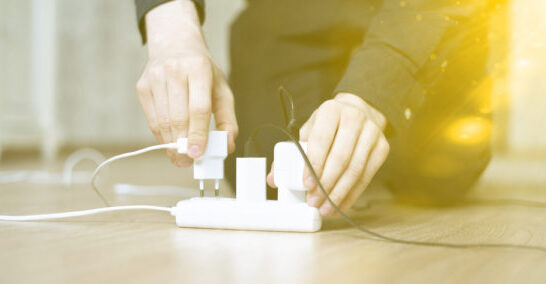
Real-World Incident: US Coast Guard Case Study
The U.S. Coast Guard has explicitly warned against the use of surge protectors at sea. Following two separate stateroom fires aboard U.S.-flagged vessels, investigations found surge protectors directly responsible. In both cases, the surge protectors, plugged into lighting circuits, malfunctioned and overheated, igniting fires because they failed to interrupt both live wires.
The Coast Guard’s guidance clearly states that any electrical protection devices onboard must be capable of safely interrupting power from both active wires, and that’s a requirement that standard residential surge protectors do not meet.
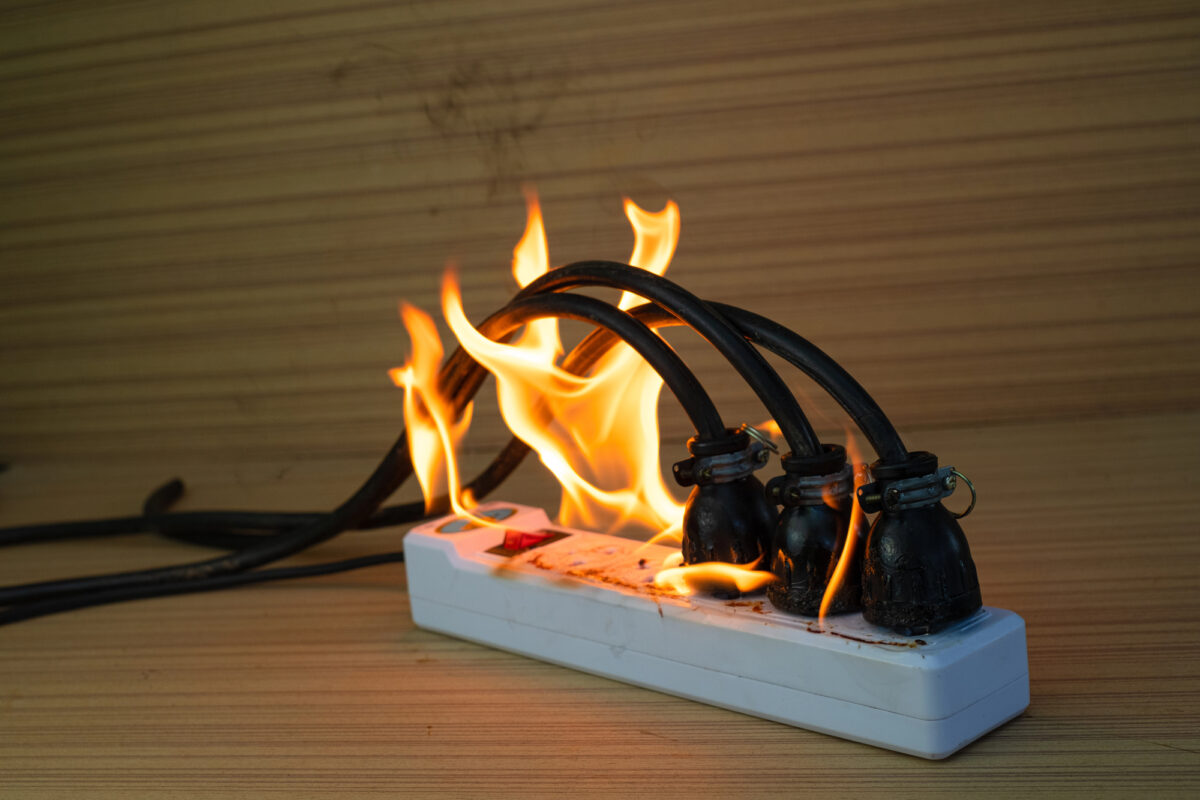
Approved Ways to Get More Outlets in Your Cabin
So, if traditional surge protectors are out, how can you safely expand your outlet options onboard? Fortunately, several cruise-friendly alternatives exist. Whether you’re cruising with Royal Caribbean, Carnival, Princess, or NCL, here’s how to stay charged safely and effectively:
USB-Only Charger Blocks (Cruise Safe for All Lines)
A universally accepted option, especially critical for Royal Caribbean guests in 2025, is a USB-only charger block. (affiliate link)
- 🛳️ ROYAL CARIBBEAN APPROVED: Fully compliant with Royal Caribbean’s new on-board policies updated in 2025. Also approved for Disney, Celebrity, Carnival, Princess, Norwegian, Holland America, MSC, Virgin Voyages & all other major…
These compact devices plug directly into cabin outlets and provide multiple USB or USB-C ports for charging smartphones, tablets, and other USB-powered gadgets. GaN (Gallium Nitride) chargers, in particular, offer rapid charging speeds and excellent portability, perfect for cruises.
Non-Surge Power Strips (Allowed on Select Lines)
If you’re sailing with Carnival, Princess, or NCL, you still have the option to pack a travel power strip that lacks surge protection. These strips safely provide multiple outlets without surge protection, clearly marked as “no surge protection” or “cruise-approved.”
One of the leading manufacturers in this area is Trond, and we have been buying and using different versions of their power strips for years. (affiliate link)
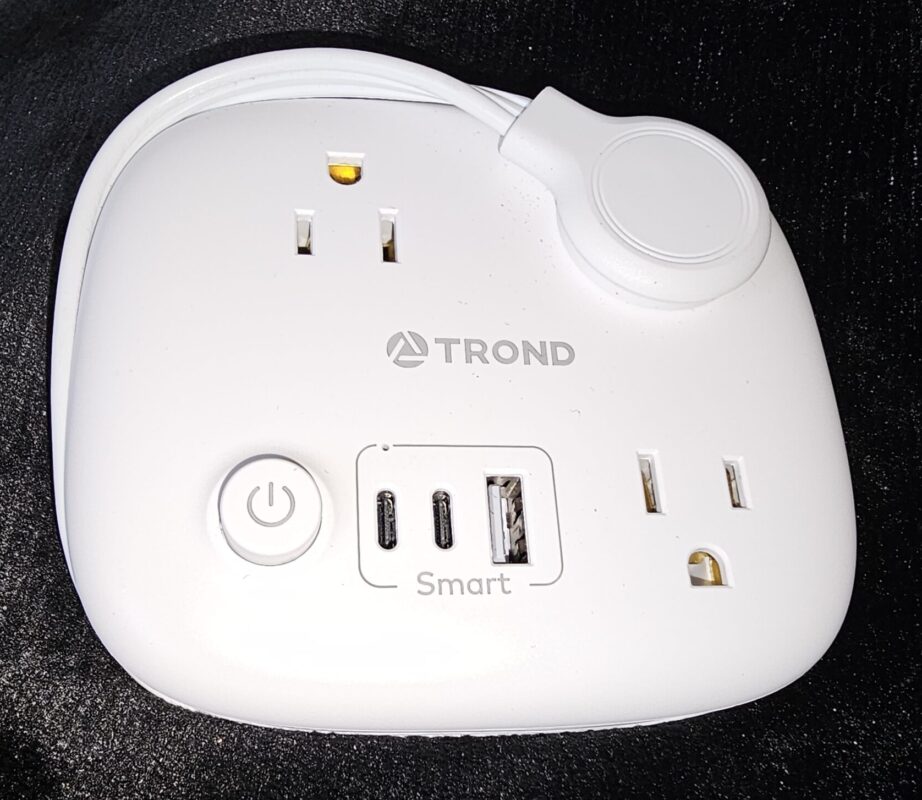
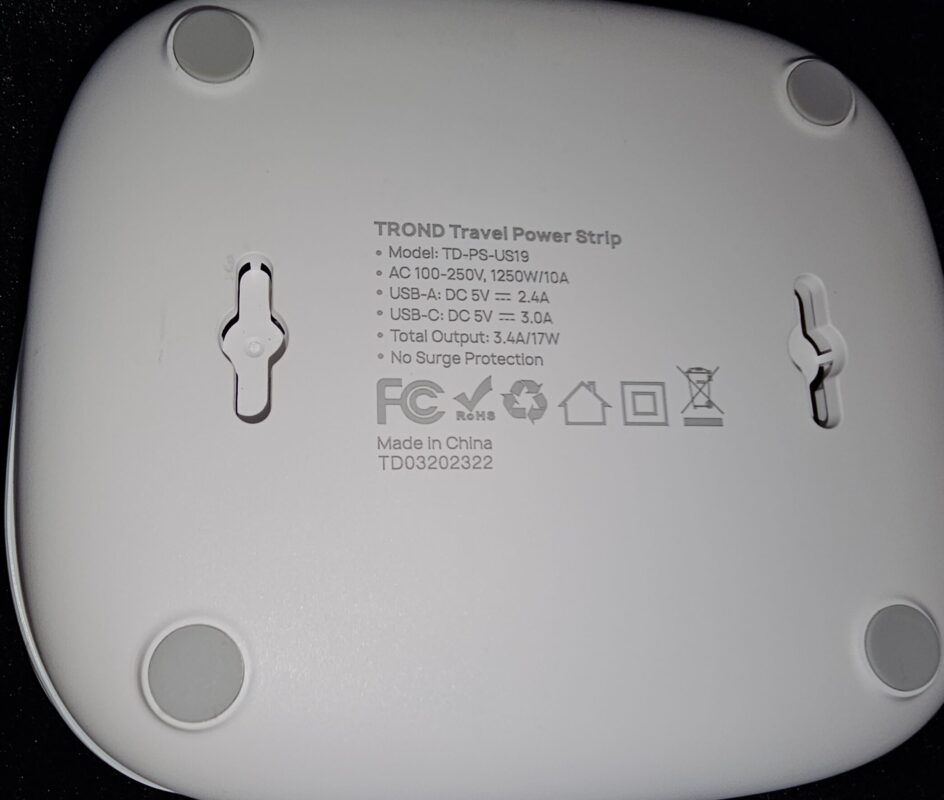
While some brands market their power strips as specifically “cruise-approved,” the critical factor is the absence of surge protection. Check the packaging or product description carefully before purchasing.
Outlet Extenders, USB Hubs, and Wireless Pads
Outlet extenders are lightweight, compact, and turn one wall outlet into several. Many newer models also include integrated USB or USB-C ports, simplifying your charging needs. Outlet extenders are widely accepted on cruise lines that permit non-surge power strips.
For a completely wireless solution, consider Qi-compatible wireless charging pads or compact USB hubs. These devices allow convenient, clutter-free charging without requiring multiple wall outlets.
Portable Power Banks & Battery-Powered Gadgets
High-capacity power banks offer maximum flexibility, allowing you to charge devices on-the-go, without relying solely on cabin outlets. Consider bringing several, and rotate them as needed. Leave one to charge in your cabin while using another onboard or ashore.
Battery-operated or rechargeable gadgets (fans, nightlights, speakers) significantly reduce the need for additional power outlets. Simply charge these items with your USB block or hub, minimizing cable clutter and optimizing your limited outlet space.
Recommended Devices for 2025 Cruises
To simplify your packing decisions for 2025 cruises, here are our carefully vetted recommendations. Each product below is designed to meet the latest cruise line policies, ensuring you’ll sail stress-free and fully charged!
Tip: Pack least one of these accessories in a carry-on bag so that you can easily whip it out in an airport or on a plane as needed.
The Anker 3 Port USB Fast Charger (Compact Version)
- 3-in-1: Equipped with two USB-C ports and one USB-A port to power three devices simultaneously.
- High-Speed USB-C Charging: Loaded with 67W of power to charge phones, tablets, and laptops. Fast charge a MacBook Pro 13″ (M1) from 0 to 50% in just 46 minutes.
- Compact and Foldable: Slightly smaller than an original 67W charger and equipped with a foldable plug that makes it easy to carry.
A versatile, compact powerhouse for cruise travelers, this USB charger delivers fast charging speeds ideal for smartphones, tablets, and laptops. Perfectly compliant with Royal Caribbean’s new USB-only rule.
Why we love it:
- High-speed 67W power (charges a MacBook Pro from 0 to 50% in just 46 minutes)
- Simultaneously charges up to three devices (two USB-C, one USB-A)
- Foldable plug and compact size for easy packing
- Broad compatibility (Apple, Samsung, and other major brands)
The Trond Flat-Plug Power Strip
Our go-to power strip when sailing on lines outside of Royal Caribbean. Its thoughtful, compact design and non-surge configuration perfectly align with cruise line policies allowing non-surge power strips.
We loved this power strip when it first came out. Check out our detailed first-hand review.
Why we love it:
- Ultra-compact design with recessed grooves for tidy cord storage
- Widely spaced outlets accommodating multiple bulky adapters simultaneously
- Convenient flat plug minimizes bulk in luggage and outlet space
Closing Thoughts
While surge protectors enhance safety at home, they’re actually dangerous onboard cruise ships due to unique electrical systems at sea. Thankfully, plenty of safe and practical alternatives exist—from USB charging blocks to non-surge power strips and portable battery banks.
Before you sail in 2025, carefully check your cruise line’s current electrical policies. Packing the right cruise-approved devices not only helps you avoid inconvenience at security but also ensures you and your family stay safe, powered up, and ready for adventure.
Keep up with the latest cruise tips and insights! Follow us on Pinterest:
Last update on 2026-01-02 / Affiliate links / Images from Amazon Product Advertising API

